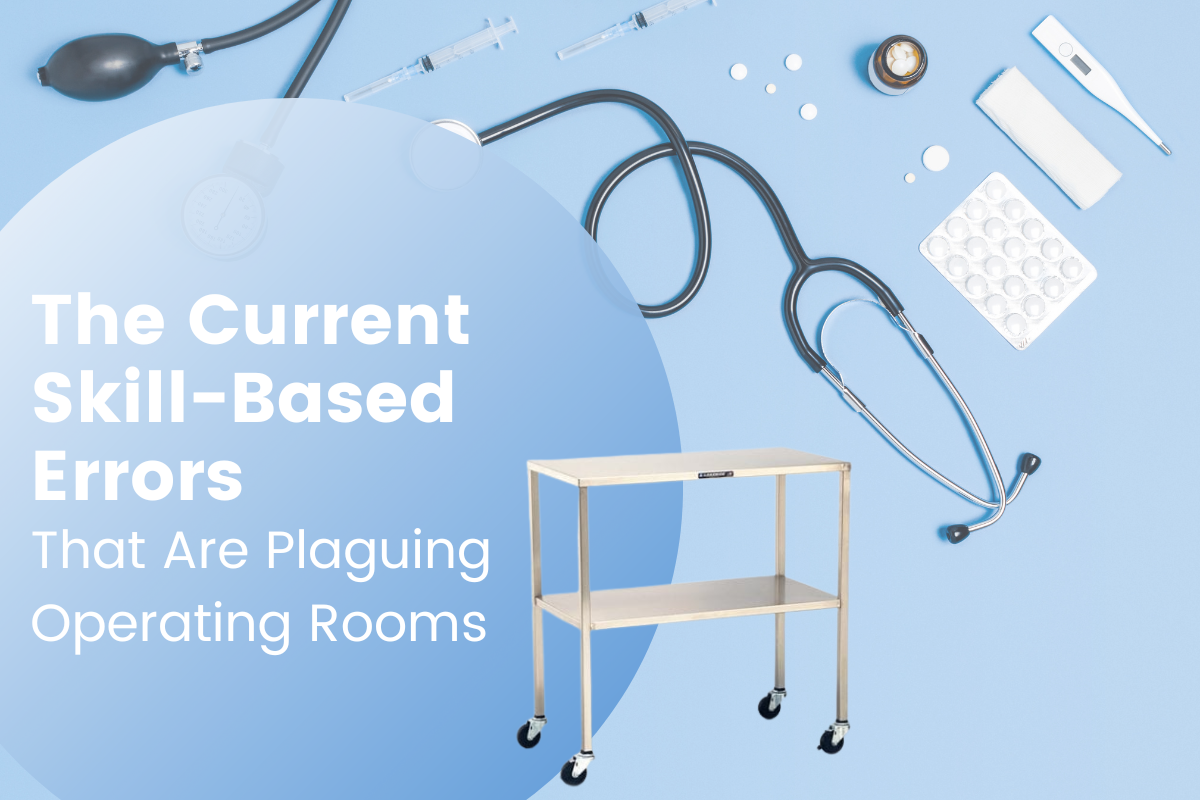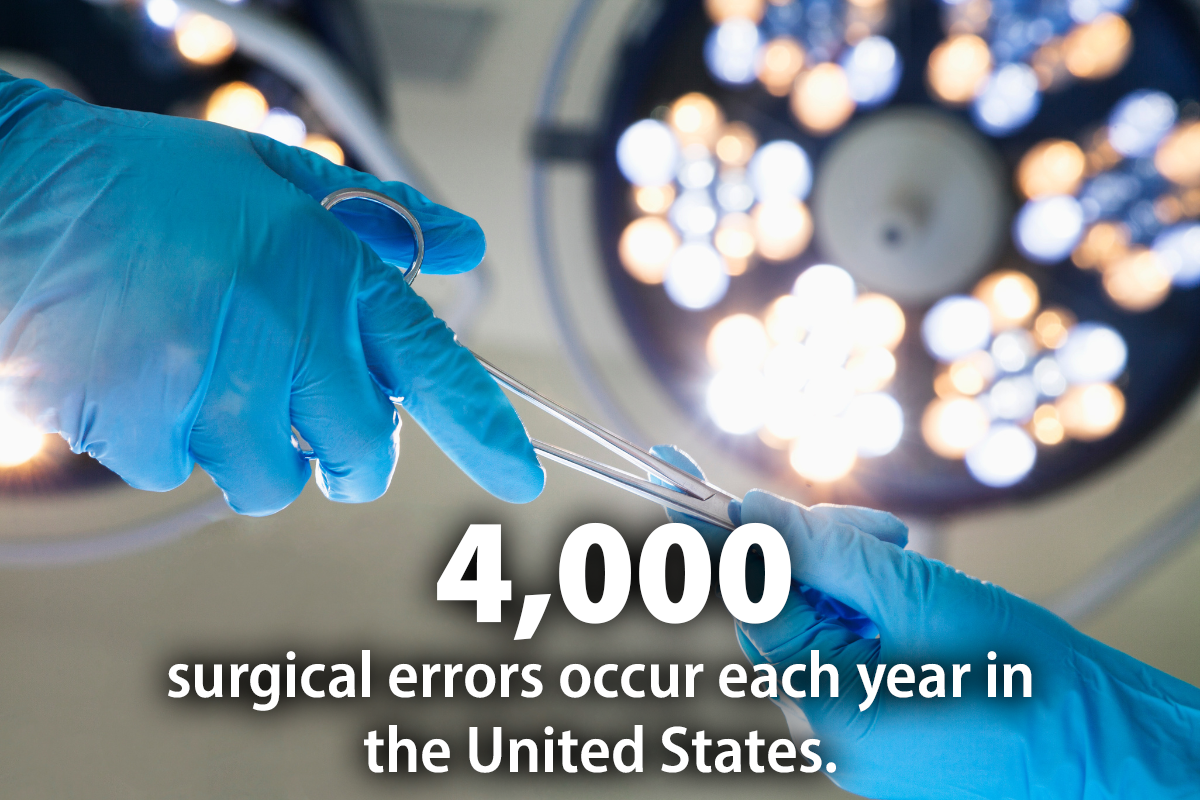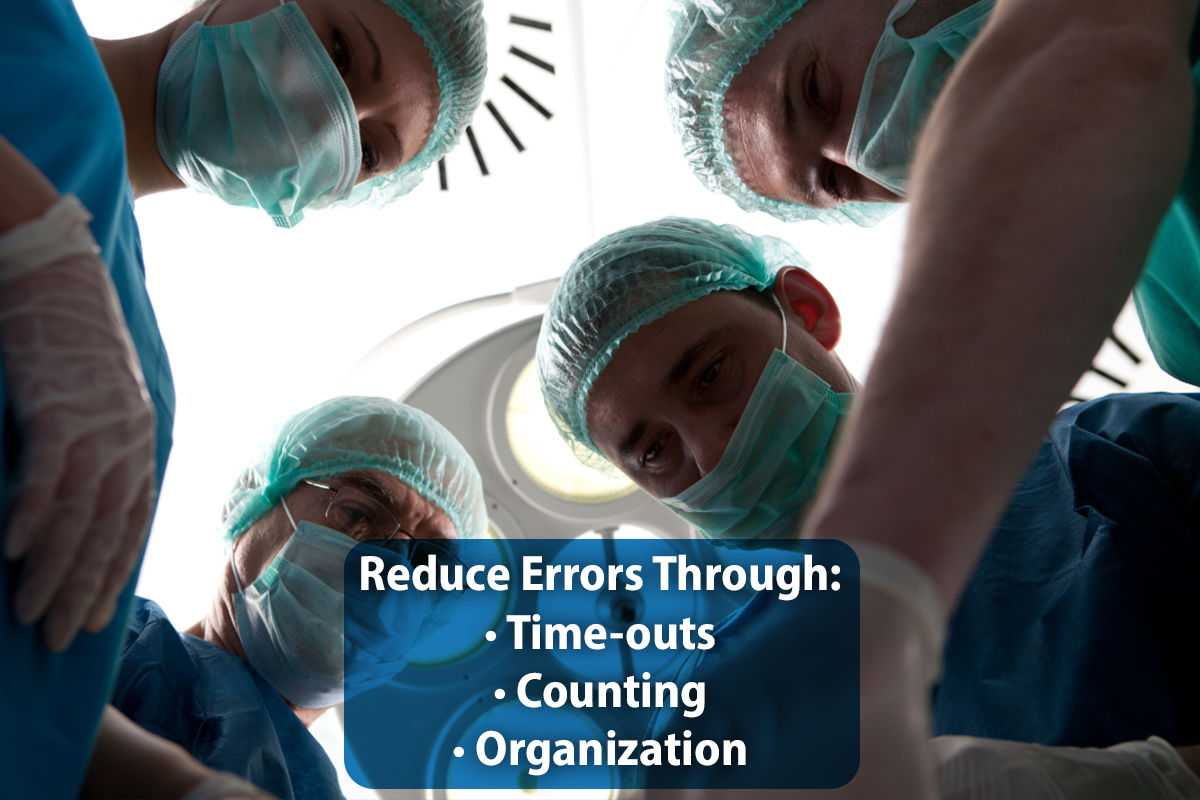
When was the last time you heard of an incredibly inspiring story? A story about beating the odds. Perhaps even a story about a person getting a second chance at life after a successful surgery to remove a cancerous tumor. Aren’t those some of the best stories that involve unbelievable amounts of strength and perseverance? We often envision medical surgeries to be absolutely safe, but… that’s not 100 percent true as errors in operating rooms can occur.
The Current Errors in Operating Rooms
On average, about 4,000 surgical errors occur each year in the United States. About 59 percent of victims suffered from temporary injury, while 33 percent had permanent injuries and 6.6 percent have died. So what are the current skill-based errors made by surgeons that lead to these imperfect numbers? According to a study done by WebMD…
- 39 times/week: Surgeons leave a foreign object inside a patient’s body after surgery.
- 20 times/week: Surgeons perform the wrong procedure.
- 20 times/week: Surgeons operate on the wrong body part.
These mistakes have cost hospitals over $1 billion per year in lawsuit payouts! Quite the costly amount of money lost to avoidable mistakes in the operating room.
Up to 80 Percent of Patient Harm is Preventable…
So then why are surgeons making careless mistakes such as leaving medical equipment in patients? Why are surgeons performing the wrong procedure on the wrong body part? The answers to those questions stem from factors such as:
- Distraction – Such as surgeons looking at their digital devices during hours of surgery or overtly talking to other surgeons during surgery. This leads to surgeons forgetting the medical equipment they left in the patient.
- Lack of Communication – This includes surgeons forgetting critical information and not speaking up, relying on memory, incomplete preoperative assessments, wrong labeling of specimens and multiple surgeons performing more than one procedure at the same time.
- Fatigue – Standing in the same spot for hours during a procedure is tiring on its own, but throw in the factor of having to hold medical supplies and your legs, feet, arms, hands, neck and eyes can start to feel fatigue. When surgeons are exhausted, clear thinking in high-pressure situations is almost impossible.
The solutions operators are implementing among their operating room staff:
- Time-outs. These are critical for operators to incorporate because they give staff members time to catch their breath and to review the patient’s medical records and surgical plans. This helps an operator’s operating room staff remain on the same page for the rest of the operation.
- Counting. What does counting have to do with surgery? Everything. Surgical sponges are a common object that gets left in patients. By counting medical tools and objects before and after the performance of surgery, fewer errors will occur.
- Organization. Frequent use of surgical checklists goes a long way. Sure, these can be time consuming or even annoying for an operator’s staff to have to fill out, but in terms of error reducing thinking, checklists can ensure objects are not forgotten in a patient.
However, these solutions won’t do much unless an operator’s staff has the correct equipment to assist them. We mentioned how much money the medical industry is losing each year due to malpractice settlements. Shall we say it again? Billions! Operators need equipment that can increase profits, not so they can lose out to costly lawsuits due to errors that could’ve been prevented.
Help Operators Work Smarter Not Harder
Careful selection of the right medical equipment is a must for any hospital operator to understand. It simply comes down to finding equipment that helps an operator’s staff work smarter, not harder. With Lakeside’s durable line of instrument tables, proper organization, counting, and short breaks are now obtainable for any operating staff, no matter the situation. How can operators and surgeons benefit from instrument tables? Let’s peel back the operating room doors and take a look.
Enhanced Organization of Surgical Instruments
Clear visibility of surgical instruments is critical in making sure surgeons pick up the correct tool. Surgical instruments must also be easy to access and grab when the time comes. A spacious, yet sturdy medical instrument cart such as the Lakeside 8359 allows an operator’s surgeons to keep track of checklists, surgical instruments, and a place to put down heavy tools for a quick break.
Superb Maneuverability in the Operating Room
Imagine how many more errors or even tragic harm could occur if the correct surgical instruments are nowhere within arm’s reach. What if a surgeon needs a specific sponge to prevent infection? For a surgeon, having all the needed tools at your fingers is vital to the success of any operation. With the Lakeside 8353 surgical instrument table, maneuverability is fast and smooth. The 8353’s compact size is perfect for moving around an operating table with the surgical instruments needed on command. Its four all-swivel casters are quiet and glide easily around tight spaces. For added security, surgeons can apply this instrument table’s two brakes to keep it in place.
Extremely Durable and Easy to Sterilize
Performing medical surgery is a vigorous task that requires long-lasting and easy to clean equipment to stand the test of time. The durability of Lakeside’s selection of instrument tables is unmatched. Our Lakeside 8394 surgical table is made of all welded stainless steel for operation after operation with a weight capacity of 200-Lb. It’s easy to clean, which helps give back time to surgeons after a long operation. This gives confidence to an operator’s surgeons knowing the risk of contamination is zero to none.
Elevating an OR
Without a doubt, the more complex a situation is, the more prone humans are to mistakes. That’s why assistance from reliable equipment makes all the difference between a patient telling their inspiring story of perseverance or a patient filing damages for errors that injured them. Assist an operator who is looking to eliminate costly surgical skill-based errors in their operating rooms by clicking ‘Elevate an OR’ below!




